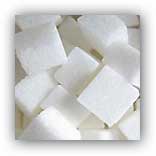News and Insights for
your best life. Online since 1998
- Home Health
- Breaking news
- In caso di...
- Per saperne di
più... - Medicina occidentale
- Medicine complementari
- Medicina cinese
e agopuntura - Omeopatia
- Fitoterapia

Implant-related infections are characterized by bacterial colonization and biofilm formation on the prosthesis. Diabetes represents one of the risk factors that increase the chances of prosthetic infections because of related severe peripheral vascular disease. Vasodilatation can be a therapeutic option to overcome diabetic vascular damages and increase the local blood supply. In this study, the effect of a PGE1 vasodilator on the incidence of surgical infections in diabetic mice was investigated.

A S. aureus implant-related infection was induced in femurs of diabetic mice, then differently treated with a third generation cephalosporin alone or associated with a PGE1 vasodilator. Variations in mouse body weight were evaluated as index of animal welfare. The femurs were harvested after 28 days and underwent both qualitative and quantitative analysis as micro-CT, histological and microbiological analyses.
The analysis performed in this study demonstrated the increased host response to implant-related infection in diabetic mice treated with the combination of a PGE1 and antibiotic. In this group, restrained signs of infections were identified by micro-CT and histological analysis. On the other hand, the diabetic mice treated with the antibiotic alone showed a severe infection and inability to successfully respond to the standard antimicrobial treatment.
The present study revealed interesting preliminary results in the use of a drug combination of antibiotic and vasodilator to prevent implant-related Staphylococcus aureus infections in a diabetic mouse model.
For mpore information
Lovati AB, Romanò CL, Monti L, Vassena C, Previdi S, et al. (2014) Does PGE1 Vasodilator Prevent Orthopaedic Implant-Related Infection in Diabetes? Preliminary Results in a Mouse Model. PLoS ONE 9(4): e94758. doi:10.1371/journal.pone.0094758
MDN
del Dott. Turetta
Quali sono i problemi o le disfunzioni che possono giovarsi di un intervento omeopatico d'urgenza e, di conseguenza, come dovrebbe essere un ideale armadietto medicinale omeopatico casalingo.- Home -
- Health -
- Depressione -
- Sexuality
- Environment -
- Food -
- Musica -
- Capirsi -
- Grafologia -
- Ridere
Copyright © 1998/2018 www.mybestlife.com tutti i diritti sono riservati eccetto quelli già di altri proprietari.
.In caso di
Pubblicità
Per saperne di più su
Pubblicità
Pubblicità
Pubblicità
Pubblicità


